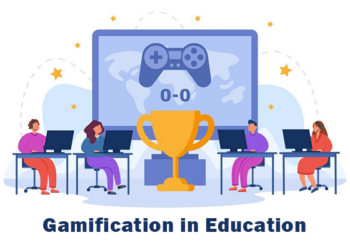In an era marked by rapid technological advancements and complex global challenges, innovation stands as a cornerstone for progress. While creativity often garners the spotlight in discussions about innovation, it’s critical thinking that provides the necessary foundation. This analytical skill enables individuals and organizations to evaluate ideas, solve problems, and make informed decisions, thereby driving meaningful innovation.
A. Defining Critical Thinking
Critical thinking involves the objective analysis and evaluation of information to form a reasoned judgment. It encompasses several key components:
Analysis: Breaking down complex information into understandable parts.
Evaluation: Assessing the credibility and relevance of information sources.
Inference: Drawing logical conclusions based on available evidence.
Explanation: Articulating reasoning clearly and effectively.
Self-Regulation: Reflecting on one’s own beliefs and adjusting them when necessary.
These elements collectively empower individuals to navigate information critically and make sound decisions.
B. The Role of Critical Thinking in Innovation
Innovation thrives on the ability to question existing paradigms and explore new possibilities. Critical thinking contributes to innovation in several ways:
Problem Identification: Recognizing underlying issues that require innovative solutions.
Idea Evaluation: Assessing the feasibility and potential impact of new ideas.
Risk Assessment: Anticipating potential challenges and mitigating risks.
Strategic Planning: Developing coherent strategies to implement innovative ideas effectively.
By fostering a mindset that values inquiry and evidence-based reasoning, critical thinking serves as a catalyst for innovation.
C. Integrating Critical Thinking into Education
Educational institutions play a pivotal role in cultivating critical thinking skills. Strategies to integrate critical thinking into curricula include:
Socratic Method: Encouraging dialogue and questioning to deepen understanding.
Problem-Based Learning: Presenting real-world problems for students to solve collaboratively.
Reflective Writing: Assigning essays that require analysis and personal reflection.
Debates and Discussions: Facilitating structured debates to explore multiple perspectives.
These approaches not only enhance students’ analytical abilities but also prepare them to contribute innovatively in their future careers.
D. Critical Thinking in the Workplace
In the professional realm, critical thinking is indispensable for innovation and organizational success. Its applications include:
Decision-Making: Evaluating options and making informed choices.
Strategic Planning: Developing long-term plans based on thorough analysis.
Conflict Resolution: Addressing workplace disputes through objective assessment.
Continuous Improvement: Identifying areas for enhancement and implementing effective changes.
Organizations that prioritize critical thinking are better equipped to adapt to changing environments and drive innovation.
E. Challenges to Developing Critical Thinking
Despite its importance, several barriers hinder the development of critical thinking:
Educational Limitations: Traditional teaching methods may not emphasize analytical skills.
Information Overload: The abundance of information can make it difficult to discern credible sources.
Cognitive Biases: Personal biases can cloud judgment and hinder objective analysis.
Time Constraints: Fast-paced environments may discourage thorough evaluation.
Addressing these challenges requires intentional efforts to create environments that value and promote critical thinking.
F. Strategies to Enhance Critical Thinking Skills
Individuals can adopt various strategies to strengthen their critical thinking abilities:
Active Reading: Engaging with texts by questioning and summarizing content.
Mind Mapping: Visualizing relationships between concepts to understand complex ideas.
Peer Discussions: Sharing perspectives with others to gain new insights.
Continuous Learning: Pursuing ongoing education to broaden knowledge and analytical skills.
By incorporating these practices into daily routines, individuals can enhance their capacity for critical analysis and innovation.
G. The Synergy Between Critical and Creative Thinking
While distinct, critical and creative thinking complement each other in the innovation process:
Creative Thinking: Generates novel ideas and approaches.
Critical Thinking: Evaluates and refines these ideas for practical application.
This synergy ensures that innovative concepts are not only imaginative but also viable and effective.
H. The Future of Critical Thinking in Innovation
As the world continues to evolve, the role of critical thinking in innovation will become increasingly significant:
Technological Advancements: Navigating emerging technologies requires analytical skills to assess implications.
Global Challenges: Addressing issues like climate change and public health demands critical evaluation of complex data.
Workforce Development: Employers will seek individuals capable of critical analysis to drive organizational growth.
Investing in critical thinking development is essential for preparing individuals and societies to innovate effectively in the future.

Critical thinking serves as the bedrock of innovation, enabling individuals and organizations to navigate complexity, evaluate ideas, and implement effective solutions. By fostering environments that encourage analytical reasoning and continuous learning, we can unlock the full potential of innovation to address the challenges and opportunities of our time.













